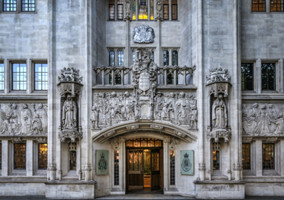Evidence has yet to emerge of the anticipated increase in charity mergers caused by the pandemic. However, as one of the worst-affected sectors, arts and culture charities may have an increased appetite for mergers and partnership working over the coming years.
Some of the key considerations before embarking on a merger are:
- Whether the merger is in the best interests of both your charity and its beneficiaries.
- What the impact on the quality of your services will be.
- How compatible your objects, vision, values, governance and culture are.
- How much engagement with key stakeholders will be needed.
- Whether you can achieve the same results by working in collaboration or partnership.
- What the costs of the merger will be.
- Whether your governing document requires consent of members in order to merge.
- Whether you have sufficient expertise to carry out due diligence in-house.
Due diligence
Due diligence before entering into a merger or joint venture should cover legal, financial and property matters, as well as operational concerns, such as governance, IT and internal controls.
In addition to reviewing previous financial performance and budgets and cash flows, you should also perform a detailed analysis of liabilities. Watch out for items that may not be immediately identifiable from the financial statements or forecasts but which could result in a significant outflow of resources in the future, such as leases and defined benefit pension schemes. Loans should also be scrutinised to ensure that any covenants are not at risk of being breached.
Make sure that you are realistic about cost savings and the time frame over which these will realise. There will also likely be unavoidable costs associated with both the merger and achieving cost savings, such as professional fees, rebranding, relocation, restructuring and staff time.
Tax matters are also key. In particular, VAT should be carefully considered to ensure that the proposed new structure is efficient. Charities have a trading limit of £80,000 (unless their income is below £320,000), so if the merger will push you above this limit, a trading subsidiary may need to be established.
Accounting for a merger
UK-registered company charities cannot use merger accounting as set out in section 27 of the Charities Statement of Recommended Practice (SORP). However, unincorporated charities, charitable incorporated organisations (CIOs) and non-UK registered companies are able to do so, provided they abide by a number of guidelines. With merger accounting, the assets, liabilities and funds of both charities are presented as though they had always been part of the same “ Charities may have increased appetite for mergers ” charity, for the whole of the reporting period that the merger took place in.
UK-registered company charities are not allowed to follow merger accounting as described by the Charities SORP. Instead, the transaction is generally treated as a combination, where the assets and liabilities of the merging charity are transferred to another charity at £nil or nominal consideration. This may be both charities transferring their assets and liabilities and funds to a newly established entity, or one charity transferring their entities into the other.
Another option is for one charity to become a subsidiary of the other, or both charities becoming subsidiaries of a new holding charity.
In either case, consolidated accounts would be prepared by the new group parent. In any of these options, care should be taken over restricted funds to ensure that these remain identifiable and protected.
A merger will often be easier to account for if done at the very start of a new financial year, but this should not be the deal breaker in terms of the merger date.
Alternatives
There are many alternative means to collaborate for those who need to generate cost savings and are unable to do so with a merger. These include sharing services or premises, creating federated structures, linking charities and working in partnership. Charities that work in close partnerships may choose to establish a joint venture as an alternative to either merging or working collaboratively in a less structured way. This has the benefit of creating a separate legal entity, with separate financial record-keeping and reporting and a separate board of directors or trustees, while still retaining the separate identity, cultures and legal structure of the organisations.
Jane Askew is a director RI at haysmacintyre
Related articles










